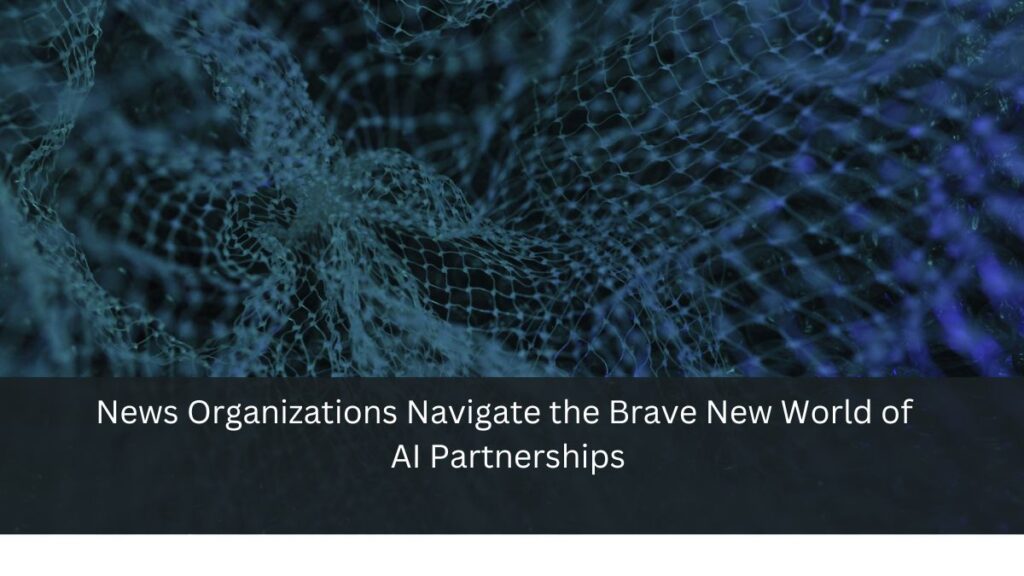Introduction
In recent months, the media landscape has been abuzz with news of prominent publications like the Financial Times, News Corp, and Axel Springer striking licensing deals with AI powerhouses such as OpenAI and Microsoft. As the potential of generative AI in the realm of journalism becomes increasingly apparent, news organizations find themselves at a crossroads – to partner or not to partner? The decision is far from straightforward, as these alliances raise a plethora of questions about the future of journalism and the evolving relationship between media outlets and tech giants.
The Allure of AI Partnerships
For news organizations grappling with the challenges of the digital age, AI partnerships offer a tantalizing prospect. By granting AI companies access to their content archives, publications like the FT hope to enhance the user experience on platforms like ChatGPT, which will be able to provide summaries of articles along with links back to the original source. This arrangement promises to expose the publications’ journalism to a wider audience while potentially driving traffic and subscriptions.
Moreover, the financial incentives associated with these deals cannot be overlooked. With reports of OpenAI paying News Corp a staggering $250 million over five years, it’s clear that AI companies are willing to pay top dollar for high-quality journalistic content to train their models. For news outlets facing economic pressures, such partnerships could provide a much-needed lifeline.
The Perils of Picking Winners
However, the current wave of AI partnerships also raises concerns about the power dynamics at play. As tech giants like OpenAI and Microsoft selectively choose their news partners, questions arise about the criteria used to determine which outlets are deemed “high-quality” or “reliable.” This selective process effectively allows these companies to pick winners in the media landscape, potentially exacerbating existing inequalities and shaping the public’s access to information.
Furthermore, the lack of transparency surrounding the financial details of these deals is troubling. With news organizations often bound by non-disclosure agreements, the public is left in the dark about the value placed on journalistic content and the potential influence these partnerships may have on editorial decision-making.
The Specter of Dependency
As news organizations increasingly rely on AI partnerships for both financial support and distribution, they risk becoming overly dependent on these tech giants. The history of Facebook’s News Tab and Google’s Accelerated Mobile Pages (AMP) serves as a cautionary tale, illustrating how quickly the priorities of tech companies can shift, leaving publishers scrambling to adapt.
In the realm of AI, this dependency could manifest in various ways. For instance, if a publication’s content becomes heavily integrated into an AI platform like ChatGPT, what happens if that platform decides to change its algorithms or terminate the partnership altogether? Such scenarios could have profound implications for the visibility and reach of journalistic content.
Balancing Innovation and Integrity
Despite the risks, it would be shortsighted to dismiss the potential benefits of AI partnerships outright. As Felix Simon, a researcher at the University of Oxford, points out, news organizations have valid reasons for embracing AI technology, which could streamline production processes and open up new avenues for storytelling.
However, it is crucial that news outlets approach these partnerships with a clear-eyed understanding of the potential trade-offs. This means carefully negotiating the terms of these deals to ensure editorial independence, transparency, and fair compensation. It also requires a willingness to walk away from partnerships that compromise journalistic integrity or unduly benefit tech giants at the expense of the public interest.
Conclusion
As the media industry navigates this brave new world of AI partnerships, it is essential that news organizations learn from the lessons of the past. The fraught history of platform-publisher relationships serves as a stark reminder of the dangers of ceding too much control to tech giants, whose priorities and interests may not always align with those of journalism.
Ultimately, the key to successful AI partnerships lies in striking a delicate balance between embracing innovation and safeguarding the core tenets of journalistic integrity. By approaching these alliances with a mix of openness and skepticism, news organizations can harness the power of AI while ensuring that they remain committed to their fundamental mission of serving the public interest through high-quality, trustworthy journalism.

